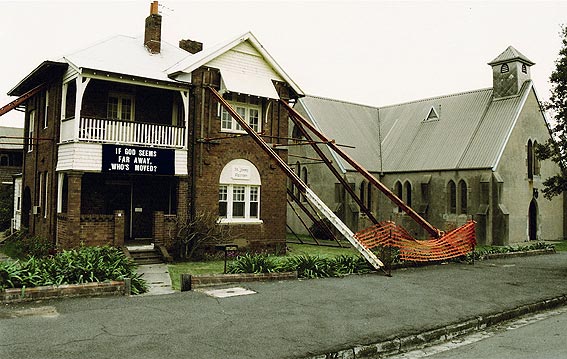While Australia sits in the middle of a tectonic plate, this merely considers the major fault lines of the globe. Australia has a number of minor fault lines, or areas of relative crustal weakness, as a result of the events involved in its formation ranging from 2.5 billion years ago to 50 million years ago.
In addition, the forces placed on the Australian continent as a result of being "pushed" by divergent plate activity to the south and "pulled" by convergent activity to the north are not uniform. As a result, areas of localised stress will build up over time. When released, they cause intraplate earthquakes.
Intraplate earthquakes are generally shallow, infrequent and have lower magnitudes compared to those located at plate boundaries. The earthquake risks of Australia are shown on the map directly below. The closer the lines, the greater the risk.

This coincides quite well with the measured earthquakes in Australia's history over the last 100 years or so.
2 earthquakes of note in recent Australian history occurred at Meckering in 1968 and Newcastle in 1989. The Meckering quake, was 6.9 in magnitude and while no deaths occurred, a 40 km rupture appeared along the ground and the ground was thrust upwards by 2 meters in some places.


On Dec. 28, 1989, a 5.6 magnitude earthquake struck Newcastle. 13 people died including 9 in the Newcastle workers club (pictured below). 300 buildings were eventually demolished and the damage bill has been calculated at $5 billion. A number of older buildings such as the local high school and parts of John Hunter Hospital had to be rebuilt. The reason for this was because many of the structural walls were sunk into the ground when constructed, and as a result, suffered significant damage. The age of many buildings was also a significant factor in the extent of the damage.



No comments:
Post a Comment